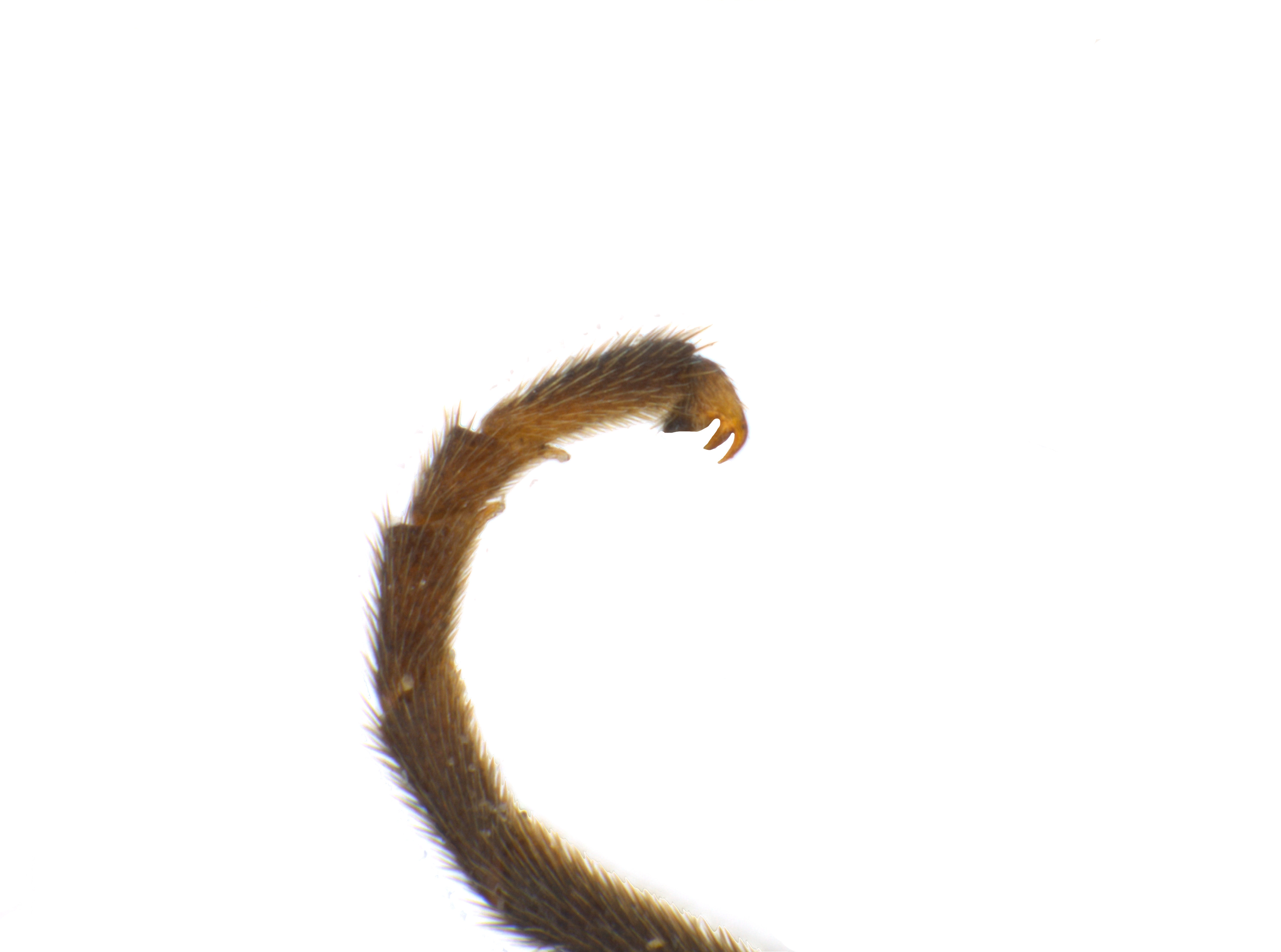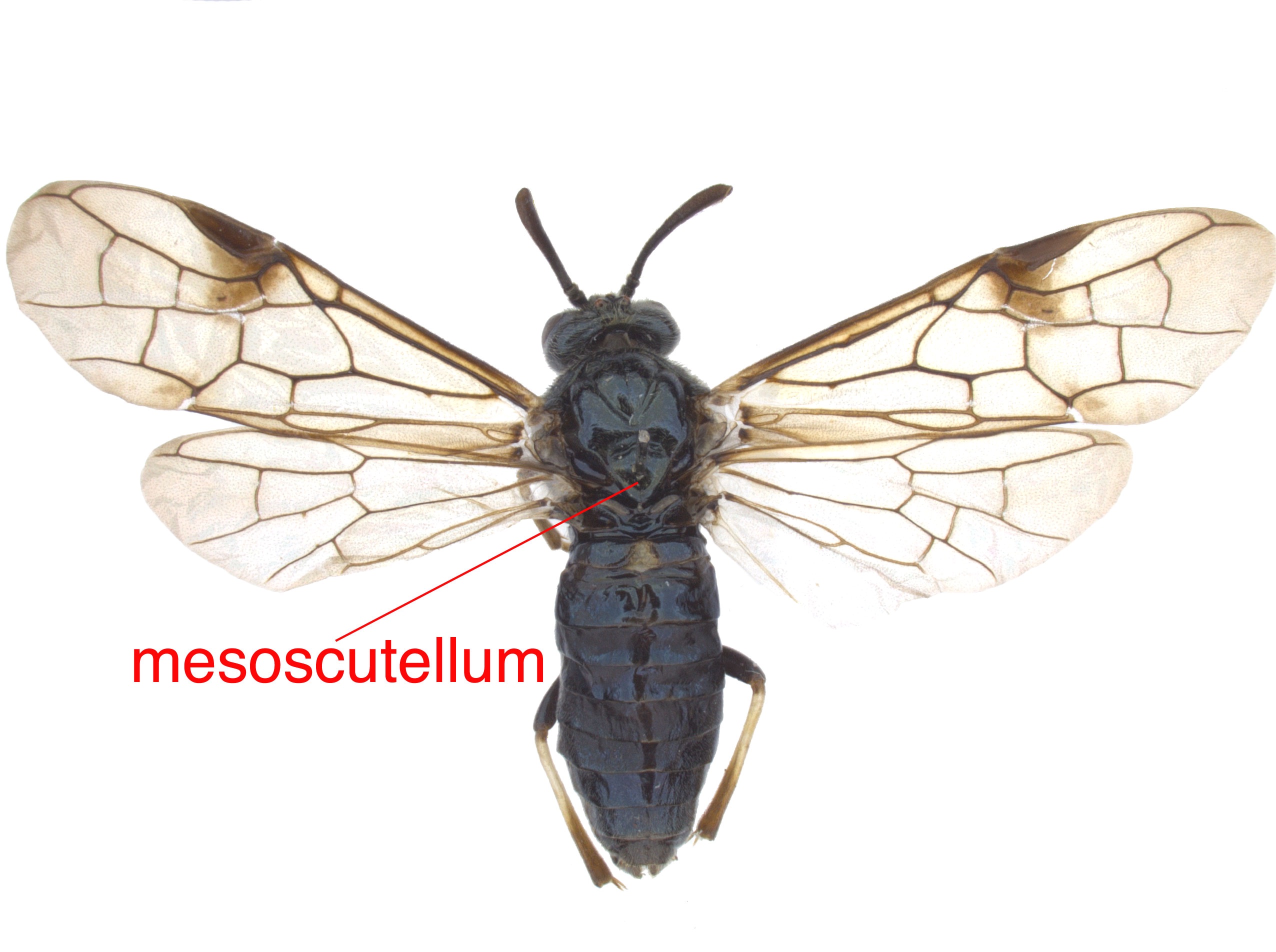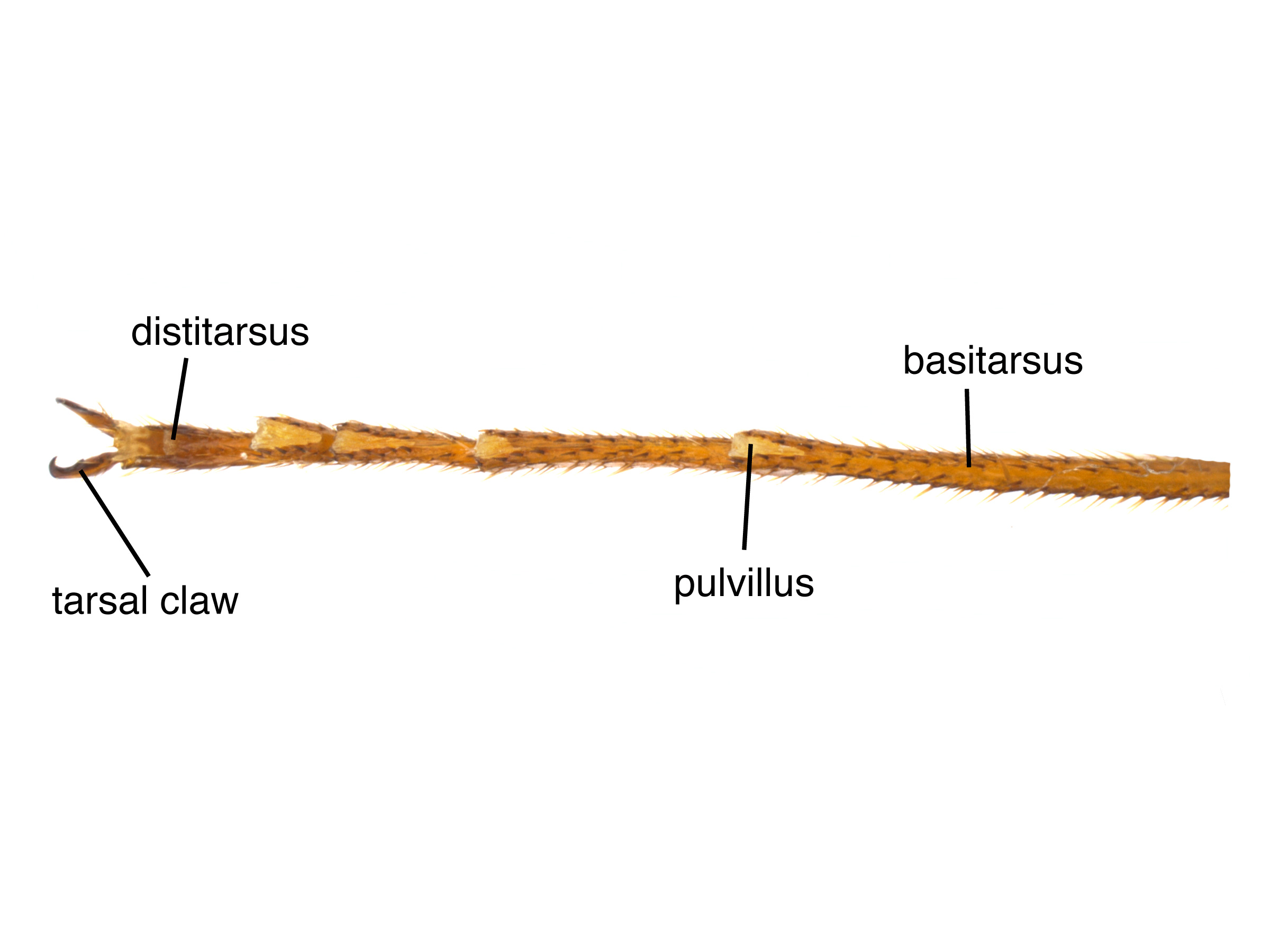Family: Tenthredinidae
Family common name: common sawflies
Subfamily: Blennocampinae
Tribe: Tomostethini
Genus: Tethida Ross, 1937
Subgenera: none
The Tenthredinidae are the most species-rich family and are found throughout the world, in all continents but Antarctica. They are known as the “common sawflies.” They can generally be recognized by a cylindrical body and long, segmented antennaeantenna:
the sensory organ emerging from the front of the head, usually between the compound eyes and above the clypeus; includes the flagellum, scape and pedicel
 . Otherwise, they come in a variety of colors, sizes, and forms (Goulet 1992Goulet 1992:
. Otherwise, they come in a variety of colors, sizes, and forms (Goulet 1992Goulet 1992:
Goulet H. 1992. The genera and subgenera of the sawflies of Canada and Alaska: Hymenoptera. Symphyta. The insects and arachnids of Canada. Part 20. Agriculture Canada Publication.).
Sawflies in the subfamily Blennocampinae have a diverse set of life histories and habits. Many species are restricted to subtropical and tropical regions, but the genus is still fairly species-rich in North America. Blennocampinae includes many sawflies that feed on ornamental and forestry crops. This subfamily can be recognized by wing venationvenation:
the network of veins on a wing
and bidentatebidentate:
having two teeth; often used in descrbing mandibles or tarsal claws
 mandibles (Smith 1969dSmith 1969d:
mandibles (Smith 1969dSmith 1969d:
Smith DR. 1969d. Nearctic Sawflies. I. Blennocampinae: Adults and larvae (Hymenoptera: Tenthredinidae). Technical Bulletin, U.S. Department of Agriculture 1397: 1-176.).
Tethida is monotypicmonotypic:
describes having only one representative; ex. a genus that includes only one species
. Tethida barda is about 7 mm in length and mostly black with reddish coloring on the laterallateral:
of or towards the side of the body
thorax and darkened wings (Smith 1969dSmith 1969d:
Smith DR. 1969d. Nearctic Sawflies. I. Blennocampinae: Adults and larvae (Hymenoptera: Tenthredinidae). Technical Bulletin, U.S. Department of Agriculture 1397: 1-176.).
There is a single described extantextant:
in existence; opposite of extinct
species worldwide, and it is North American (Taeger et al. 2018Taeger et al. 2018:
Taeger A, Liston AD, Prous M, Groll EK, Gehroldt T, and Blank SM. 2018. ECatSymmdash;Electronic World Catalog of Symphyta (Insecta, Hymenoptera). Program version 5.0 (19 Dec 2018), data version 40 (23 Sep 2018). Senckenberg Deutsches Entomologisches Institut (SDEI), Muuml;ncheberg. https://sdei.de/ecatsym/ Accessed: 28 Jan 2020.).
Subfamily characters
 veins Cu1 and 1m-cu between 120°–150° (Goulet 1992Goulet 1992:
veins Cu1 and 1m-cu between 120°–150° (Goulet 1992Goulet 1992: veins 2A and 3A incomplete (Smith 1969dSmith 1969d:
veins 2A and 3A incomplete (Smith 1969dSmith 1969d:Genus characters
 evenly haired (Goulet 1992Goulet 1992:
evenly haired (Goulet 1992Goulet 1992: veins M and 1m-cu narrowed at apexapex:
veins M and 1m-cu narrowed at apexapex: cellcell:
cellcell: M present (Smith 1969dSmith 1969d:
M present (Smith 1969dSmith 1969d: sparsely haired on central surface (Goulet 1992Goulet 1992:
sparsely haired on central surface (Goulet 1992Goulet 1992: appearing simple but with very small inner tooth (Smith 1969dSmith 1969d:
appearing simple but with very small inner tooth (Smith 1969dSmith 1969d: and mesepisternummesepisternum:
and mesepisternummesepisternum: (Goulet 1992Goulet 1992:
(Goulet 1992Goulet 1992:Tethida can be confused with similar species in the subfamily Blennocampinae. It can be distinguished from most other genera by the developed pulvillipulvillus:
soft pads used for surface adhesion, located in sawflies on the first 4 segments of the tarsus
 on basalbasal:
on basalbasal:
towards the base; closest to the body
tarsomeres and by the epicnemialepicnemium:
the anterior area of the mesepisternum
area, and from similar genus Tomostethus by the sparsely haired mesonotummesonotum:
the second segment of the dorsum of the thorax
 and the basalbasal:
and the basalbasal:
towards the base; closest to the body
area of the clypeusclypeus:
sclerotized area on the front of the head located between the antennal insertions and labrum
 (Goulet 1992Goulet 1992:
(Goulet 1992Goulet 1992:
Goulet H. 1992. The genera and subgenera of the sawflies of Canada and Alaska: Hymenoptera. Symphyta. The insects and arachnids of Canada. Part 20. Agriculture Canada Publication.).
none
Tethida barda feeds on species of Fraxinus (ash) (Goulet 1992Goulet 1992:
Goulet H. 1992. The genera and subgenera of the sawflies of Canada and Alaska: Hymenoptera. Symphyta. The insects and arachnids of Canada. Part 20. Agriculture Canada Publication.), including F. americana (white ash) (Schlesinger 1990Schlesinger 1990:
Schlesinger RC. 1990. Fraxinus americana L. white ash. In: Burns RM and Honkala BH, eds. Silvics of North America Volume 2, Hardwoods. Pp. 333-338.) and F. pennsylvanica (green ash) (Brakie 2013Brakie 2013:
Brakie M. 2013. Plant guide for green ash ( Fraxinus pennsylvanica ). USDA Natural Resources Conservation Service, East Texas Plant Materials Center. Nacogdoches, Texas. 75964.).
Tethida barda is a pest of ash trees known as the black-headed ash sawfly (Brakie 2013Brakie 2013:
Brakie M. 2013. Plant guide for green ash ( Fraxinus pennsylvanica ). USDA Natural Resources Conservation Service, East Texas Plant Materials Center. Nacogdoches, Texas. 75964.). Females oviposit into the edge of the leaves in rows, leaving a blistered patterning on the leaf. After hatching, larvaelarva:
the immature stage of holometabolous insects
 feed gregariously on the underside of the leaf, consuming it entirely. LarvaeLarva:
feed gregariously on the underside of the leaf, consuming it entirely. LarvaeLarva:
the immature stage of holometabolous insects
 are white to light green with black head capsules (Osborne 1884Osborne 1884:
are white to light green with black head capsules (Osborne 1884Osborne 1884:
Osborne H. 1884. The ash saw-fly ( Selandria barda Say). The Canadian Entomologist 16 (8): 148-152.).
World: This genus is known only from North America (Taeger et al. 2010Taeger et al. 2010:
Taeger A, Blank SM, and Liston AD. 2010. World Catalog of Symphyta (Hymenoptera). Zootaxa 2580: 1-1064.).
North America: Tethida barda occurs in the eastern part of North America, from as far north as New Brunswick and Saskatchewan, south to Florida and Texas (Smith 1969dSmith 1969d:
Smith DR. 1969d. Nearctic Sawflies. I. Blennocampinae: Adults and larvae (Hymenoptera: Tenthredinidae). Technical Bulletin, U.S. Department of Agriculture 1397: 1-176.).
Map data from: GBIF.org (29 October 2019) GBIF Occurrence Download Tethida
Details about data used for maps can be found here.